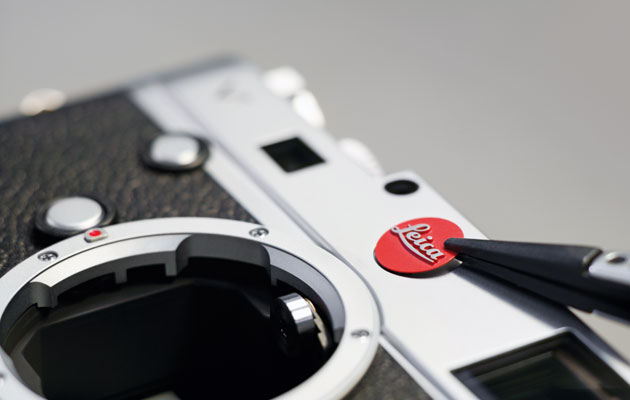|
An adhesive label bearing the famous red dot logo is applied (image: Leica camera AG) |
||
|
It is 100 years since Oskar Barnack pioneered the lightweight 35mm camera – the window through which the 20th century watched cities rise and soldiers fall André Kertész was one of the first to buy one, and it allowed him to abstract the streets of Paris from every imaginable angle; Ilse Bing and Diane Arbus both learned what a camera could do on theirs; Henri Cartier-Bresson famously had up to four swinging around his neck, or just one hidden under his jacket; Robert Capa took his as close to war and death as he could; Walker Evans and Helen Levitt attached right-angle viewfinders on to theirs to catch Manhattanites unaware; while Lee Friedlander used his to fragment the city and chase shadows. In 1914, when Oskar Barnack pioneered the first mass-marketed 35mm stills camera, he had no way of knowing the impact that his Ur-Leica would have on photography in the rest of the century – particularly as his prototype was not even manufactured for another ten years, due to the First World War and the reluctance of Barnack’s employer, the German optics company Leitz, to risk entering the camera market. The roaring 1920s though demanded a camera that could keep up with modernity. Cities were growing upwards and outwards, but their teeming streets were photographed in the same way as Ansel Adams and other landscape photographers shot the High Sierra or Yosemite: with a cumbersome, large-format glass plate camera, which often needed to be reloaded after each shot and absolutely had to be mounted on a tripod. Photographers such as Kertész and Walker Evans wanted to be more free to observe everyday spectacles around them and the Leica’s lightweight and unobtrusive body provided the means. With its motto “small negative – big picture”, it was a camera whose ordinary but beautiful design reflected the pictures it allowed photographers to take. It proved revolutionary at capturing the most transient and cacophonous arenas of life – cities and war – where a rapid response and ease of use were paramount for a photographer in their midst. If 35mm had not been invented, what would Robert Capa’s famous shot from the Spanish Civil War, Falling Soldier, look like? There were other 35mm cameras on the market, but none proved as popular with photographers as Leica’s many models, and no brand since, not even Hasselblad, has given rise to the same degree of obsession and mythologising. It’s little surprise that when it came to self-portraiture, Ilse Bing, Allen Ginsberg, Stanley Kubrick and many other artists chose a Leica for the task – and a mirror, to highlight the camera itself. Nowadays celebrities from Brad Pitt to Miley Cyrus are papped with theirs, hoping these associations will rub off on them. Of course it is the shutterbug who is the artist, not the shutter itself, its metal and plastic casing, the mechanisms inside or Leica’s famous red dot logo. “That little camera that he raises and snaps,” noted Jack Kerouac of Robert Frank and his Leica in his introduction to Frank’s 1958 photo-travelogue The Americans. Frank no doubt would have used another instrument to produce his grainy, off-beat views of gas stations, bus depots and diners if he hadn’t possessed a Leica M3. Today, photographers are as likely to use a Go Pro or an old-fashioned large-format camera as they are a Leica, and the camera company’s reputation now rests upon the quality of |
Words
Isabel Stevens |
|
|
||

















